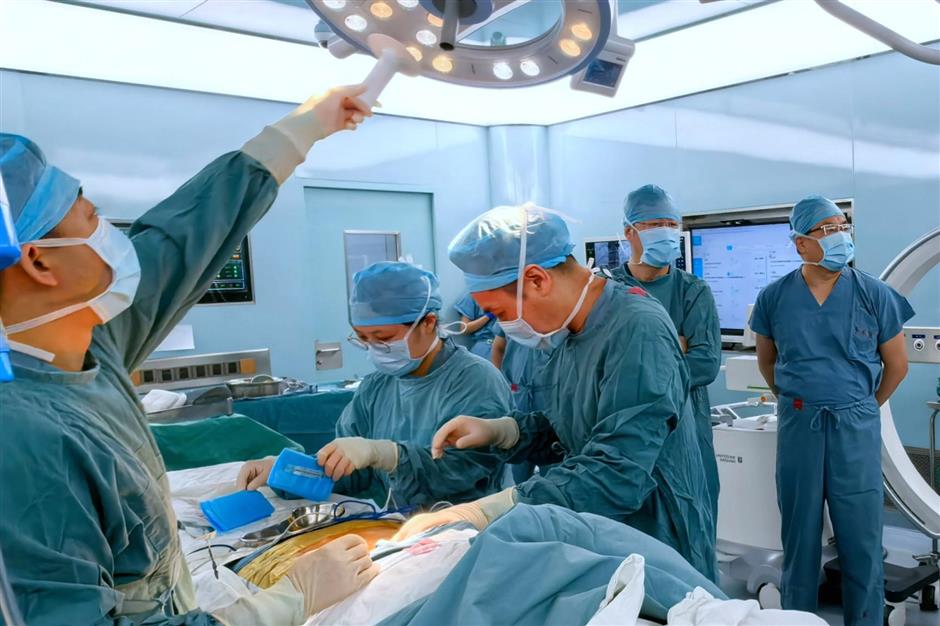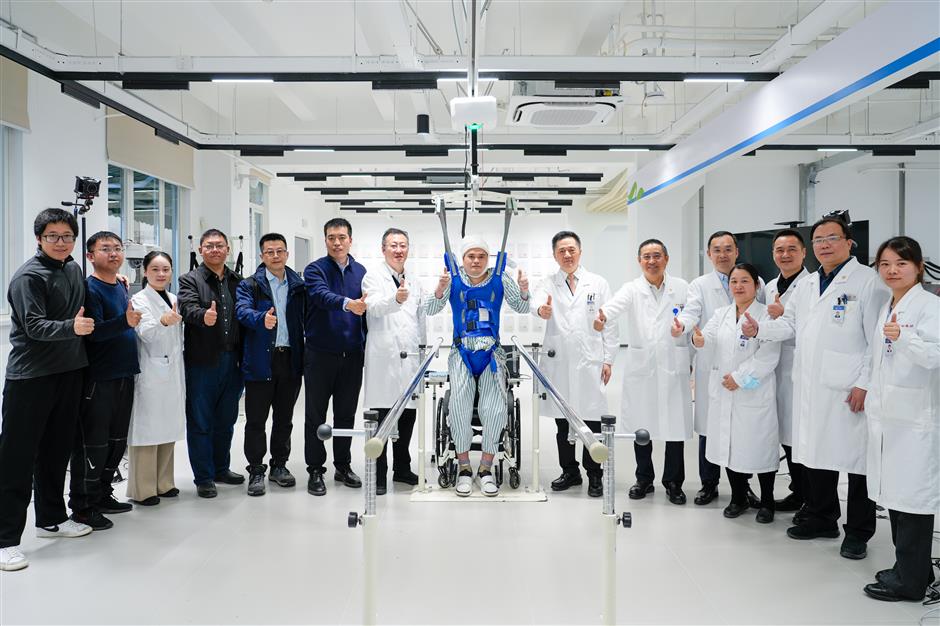政府新闻
全球首例微创脑脊接口患者截瘫两年重新站立行走 2025-03-04
A patient who had been paralyzed for two years due to a spinal cord injury is able to stand and walk independently, thanks to a brain-spine interface device that was implanted at Shanghai's Zhongshan Hospital.
The patient is the world's first with total paraplegia to be able to stand and walk with the help of the minimally invasive BSI technology, the hospital announced on Tuesday.
The patient with the surname Lin is from Guangdong Province. He fell from a 4-meter-high staircase two years ago, leading to spine injuries and a brain hemorrhage. Lin's two legs entirely lost function, forcing him to rely on a wheelchair.
Spinal cord injury disrupts communication between the brain and the part of the spinal cord that controls walking, resulting in paralysis.
He became the first participant in the brain-spine interface clinical trial, which was launched by Zhongshan Hospital and Fudan University's Institute of Science and Technology for Brain-Inspired Intelligence. This technology uses epidural electrical stimulation (EES) to create a link between the spinal cord and the brain by transforming motor goals into muscle activation stimuli.

Doctors implant BSI electrodes into a paralysis patient's brain and spine.
Experts placed electrodes into certain parts of the brain to collect data.
Based on very complicated algorithms and signal decoding, EES can send electrical signals to the affected areas that work on the nerve system through electrodes implanted in the spinal cord to control the lower limbs.
BSI technology creates a nerve bypass from the affected areas, a new form of treatment for paralysis patients.
On January 8, the electrodes were successfully implanted into the brain and spine during a 2-hour minimally invasive surgery.
The findings were significant. Lin's right leg was able to move on the first day after surgery, and both legs regained movement by the third day.
On the eighth day, he began leg-raising training with a support facility and started to train to walk on the tenth day.
On the 49th day, he was able to walk independently with assistance.

Lin (center), who was on wheelchair for two years, stands with a support system at Zhongshan Hospital.
"I finally regained the ability to walk," he said with tears in his eyes.
According to hospital officials, Lin will be able to walk more freely in the future, but will need a walking aid.
Two other patients have also been implanted with the BSI technology. The results have been good, doctors said.
There are nearly 20 million people worldwide with spinal cord injuries, with 3.74 million of them in China. The success of BSI technology is likely to give hope to a significant number of patients and improve their quality of life.
Source: Shanghai Daily
